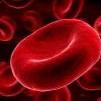Reputation Activity
-
 MaryPDX reacted to Malcolm Needs in Positive DAT
MaryPDX reacted to Malcolm Needs in Positive DAT
I don't want to get you into trouble, but I would suggest that you gently persuade your manager to either read (and take notice of) BSH Guidelines or (or better still, and) contact an NHSBT Consultant to get advice/contact one of the writing group of the Guidelines (medically qualified, if necessary) to save him/her and his/her staff a lot of totally unnecessary work and expense (particularly as his/her budget is provided by British tax payers, of which I am one)!!!!!!!!!!!!!!!!!
-
 MaryPDX reacted to Malcolm Needs in Positive DAT
MaryPDX reacted to Malcolm Needs in Positive DAT
In my opinion, this very much depends upon the underlying pathology. For example, if the patient has an auto-immune haemolytic anaemia, the chances are very strong that the DAT will be positive before as well as after the transfusion, and that any eluate will be positive with all red cells tested (of normal type). The chances of detecting a new antibody specificity on the DAT positive red cells under these circumstances is disappearingly small.
Therefore, if the sample is sent to a reference laboratory on a regular basis, your manager will be 1) showing a degree of ignorance that should be surprising, 2) will be upsetting the staff of the reference laboratory, as most have enough to do, without having to perform extra, unnecessary work, and 3) as you are in the UK, will be wasting the tax payer's money (and, as a UK tax payer, I feel very strongly about this).
If, on the other hand, the positive DAT is new, then a reference laboratory would be delighted to help out.
Of course, what your manager could do is to buy his/her own laboratory an elution kit, and train his/her staff to use it!!!!!!!!!!!!!!!! This may bring the cost of the kits to meaningful results ratio to the overall pathology manager, which could be of interest!
-
 MaryPDX reacted to R1R2 in CAP survey data entry
MaryPDX reacted to R1R2 in CAP survey data entry
Found early mornings and evenings are best. A martini in hand doesn't hurt either.
-
 MaryPDX reacted to pinktoptube in Interpreting "weak" results on MTS cards.
MaryPDX reacted to pinktoptube in Interpreting "weak" results on MTS cards.
I have this issue also. The guide doesn't give a weak reaction as a result. I always go by if it's a pellet with a few "specks" it's negative....why search for zebras.
-
 MaryPDX reacted to Malcolm Needs in Pink EDTA Tubes Used in Antibody Screens
MaryPDX reacted to Malcolm Needs in Pink EDTA Tubes Used in Antibody Screens
Actually, Ca++, Mn++ and Mg++ ions are all chelated by EDTA, and all of them are required for complement activation through to haemolysis.
The antibodies that gave suspicion as to their specificity by haemolysis (apart, of course, from rip roaring ABO antibodies) were anti-H (from an Oh individual), anti-I (from an adult ii individual), anti-PPKP1 from a pp individual and an anti-Vel. As no Ca++, Mn++ or Mg++ are present, you will not see haemolysis with these antibodies in any of the tests you mention, however, you will, except in very rare cases, see agglutination. In some 43 years in, usually, Reference Laboratories (so we saw most specificities), I know of only one case were an anti-Vel was missed in the UK because the anti-Vel was so weak by IAT using EDTA plasma, but was quite strong using serum, and Jill Storry has also described such a case (although I do not have her citation to hand).
I really wouldn't worry about it. It is just SOOOOOOOOO rare. It is a bit like a patient with an anti-Wra being given Wr(a+) blood by electronic issue, after a clear antibody screen. It happens, but you wouldn't abandon electronic issue on such a rare happening.
-
 MaryPDX got a reaction from MeganPLT in Grifols Erytra
MaryPDX got a reaction from MeganPLT in Grifols Erytra
We didn't. We now have 2 Erytras. Had the first for about 1 1/2 years, the second we just got.
-
 MaryPDX got a reaction from kate murphy in Use of Whole Blood in Massive Transfusions
MaryPDX got a reaction from kate murphy in Use of Whole Blood in Massive Transfusions
Our facility was involved in the that study. As a result, in a massive the first box issued is 4RC and 4FFP (which we always have ready to go) thereafter it's 6RC 6FFP and 1u Platelets. We keep ahead with this until the massive is called off.
-

-
 MaryPDX reacted to Dansket in Electronic Crossmatch
MaryPDX reacted to Dansket in Electronic Crossmatch
No adverse reactions to blood transfusion due to ABO mismatch or unexpected antibody undetected since implementation of electronic crossmatch in 1997.
-
 MaryPDX reacted to TreeMoss in MEDITECH TEST ORDERS FOR NEONATAL TRANSFUSION
MaryPDX reacted to TreeMoss in MEDITECH TEST ORDERS FOR NEONATAL TRANSFUSION
We do not use cord blood specimens for any crossmatching purposes because the cord blood specimens are labeled with mom's armband label and are not always labeled at the time they are collected. When any Packed Cell is ordered, the computer automatically orders a type and screen with the crossmatch. We have the NICU draw us 1 ml of blood in EDTA, and we do the type and screen (in gel). If the screen is negative, we can result on that specimen until the baby is 4 months of age. We do not do any crossmatches on the baby unless the antibody screen is positive, and in that situation, a new specimen is needed every 7 days until the antibody screen is negative and a crossmatch is performed. If we need to test using the mom's plasma, we would enter results and add a result comment that the antibody screen was performed on mom's plasma.
-
 MaryPDX reacted to Malcolm Needs in Anti-H and anti-HI
MaryPDX reacted to Malcolm Needs in Anti-H and anti-HI
Is it only Bombay phenotype that can produce a true allo anti-H and require I negative blood?
Yes, it is only a true Oh individual ("Bombay" is the wrong nomenclature. This misnomer came about because the first few individuals with this phenotype all came from around that area of India, and this is now named Mumbai anyway, but the Oh phenotype has now been detected in many other populations around the world) who can produce a true allo-anti-H, however they do not need I Negative blood, but most certainly do need H Negative blood, and so can only safely be given blood from another Oh individual.
In Para-Bombay is it only A1, A1B and B that can form a weak reacting anti-H and is it really auto anti-H?
"Para-Bombay", like "Bombay" is now not used. The terminology used now is Ah or Bh (you would be lucky to find an individual with the AhBh phenotype as, as far as I know, nobody of this type has been described). There is some dispute over the genetic background to these individuals. It is probable that they have a silent FUT1 (or H) gene, but a functioning FUT2 (or SE gene), and so the individuals will produce soluble A or B substance (Type 1), but not the insoluble type of A or B that is intrinsic to the red cell membrane (Type 2). It is believed, therefore, that the A or B antigens that are found on the red cells of Ah and Bh individuals are actually adsorbed onto the red cell surface from the plasma. Such individuals would, of course, also secrete a small amount of H substance into the plasma, and this would also be adsorbed onto these red cells. This complicates matters, with regard to what kind of anti-H is produced. Certainly, it is usually weak, but is it an auto-anti-H or an allo-anti-H? The answer is a "bit of a lemon"! It is probable that such individuals produce an allo-anti-H directed against the Type 2 H antigen, but could also make an auto-anti-H against the Type 1 H antigen. However,as the Type 1 and Type 2 H molecules are very similar to one another (The Type 1 molecule having a beta-1-3 linkage between the terminal D-galactose and the sub-terminal N-acetylglucosamine, whereas the Type 2 molecule has a beta-1-4 linkage between these two sugar residues - otherwise they are identical), and this may explain the weakness of the anti-H produced.
All that having been said, some workers think that a weak H antigen, intrinsic to the red cell membrane (Type 2) may be produced in certain circumstances, if the mutation to the FUT1 gene does not produce an absolutely null fucosyltransferase, but produces a fucosyltransferase that can produce the H antigen, but only in very small amounts. If this were the case, then both the anti-Type 1 H and the anti-Type 2 H would both be auto-antibodies.
For transfusion they would get 37°C IAT compatible and never A2 or O?
Transfusion of these individuals is complicated! If time allows, I would always transfuse cross-match compatible group Oh blood. If the situation is urgent, then I would give group O blood, even though there is a weak anti-H present, but cover with high dose IVIgG, and keep my fingers, toes, arms, legs and eyes all crossed!
The same goes for anti-HI. Is it only "Para-Bombays" that produce this? Is it really auto-, or can normal A1, A1B and B individuals produce it too?
Here, I am glad to say (actually, immensely glad to say) we are on safer ground! Anyone, of any common or uncommon blood type, including group O individuals, can produce an anti-HI, and this is ALWAYS an auto-antibody (on the grounds that an Oh individual, who is also an adult ii individual has never been described - and probably never will be - and this would be the only person who could possibly make an allo-anti-HI!). There is not an awful lot more to say about that!
Is there such a thing as auto ant-H and HI in group O individuals?
Yes, there is such a thing as auto-anti-H in a group O individual, but it is disappearingly rare (as is auto-anti-A in a group A individual and an auto-anti-B in a group B individual). On the other hand, an auto-anti-HI is not uncommon in group O individuals, although it is rarely clinically significant (only really in cases of CHAD) and, in healthy individuals, you would usually have to perform some "exquisite" serology to prove it was present.
There, I hope that helps! Of course, othrs may not agree with what I have written.
-
 MaryPDX reacted to Brenda K Hutson in Grifols Erytra
MaryPDX reacted to Brenda K Hutson in Grifols Erytra
When we first saw the Erytra (at another Hospital) and they showed the enlarged gel card picture, I thought "uh oh, this is not going to be good." I could see every little red speck in there and wanted to call it Positive, but the TSA said it was Negative. So, I try not to look at those enlarged pictures. If I need a close-up on something questionable, I will pull the card out and look at it.
Brenda
-
 MaryPDX reacted to Malcolm Needs in Microscopic Examination
MaryPDX reacted to Malcolm Needs in Microscopic Examination
Many years ago, Peter Issitt stated that microscopes should be banned from Transfusion Laboratories (I think it was in the orange edition of his book) except for such tests where cells are being counted (such as the Kleihauer).
Many years after his wise words, I still follow his advice, and have not (yet) been involved in a missed weak antibody that has caused a clinically significant haemolytic transfusion reaction (43 years in the job), and many of those tests were performed in opaque tiles and then, as we "modernised", tube techniques.
-
 MaryPDX reacted to Malcolm Needs in Giving O Pos PRBC's to a male JohnDoe during a Massive Transfusion.
MaryPDX reacted to Malcolm Needs in Giving O Pos PRBC's to a male JohnDoe during a Massive Transfusion.
Scott asked me to expand on my one liner above!
In the UK, much of what we do is "governed" by Guidelines issued by the British Society of Haematology (BSH). For some time now, they have advised that group O, D Positive red cells be given, in an urgent situation to all males and to females over 50-years-old. As far as I know, this has resulted in no clinically unfortunate sequalae, and, also as far as I know (and I am one of the people who writes these Guidelines) there is certainly no plans to reverse this decision.
I am equally unaware of any problems encountered where the patient has been readmitted to a different hospital and the transfused O Positive red cells causing any problems; indeed, there used to be problems the other way round, when we used to give D Negative blood to D Positive patients, who were then thought to be D Negative. However, in most cases, these patients are either too ill to be moved to another hospital (don't forget, you would only give uncrossmatched blood in extremis) and, sadly, some of them do not ever get the chance to go to another hospital (remember also, that a huge percentage of patients who receive a transfusion of ANY kind are dead within six months (because of the underlying pathology, I hasten to add, not because of the transfusion!).
We do not issue any cards, apart to those patients who warrant an antibody card.
I hope that helps Scott, at least, even if it doesn't help you Christiane (that was tongue in cheek, in case anyone thinks I was being nasty to either of you)!!!!!!!!!!!!!!!!!!!!!!
-
 MaryPDX reacted to SMILLER in Giving O Pos PRBC's to a male JohnDoe during a Massive Transfusion.
MaryPDX reacted to SMILLER in Giving O Pos PRBC's to a male JohnDoe during a Massive Transfusion.
Yup, we start right off with O Pos's in massive transfusion situations if appropriate. Save the O negs for child-bearing age O Neg females if at all possible...
The newer trend in MTPs is to use A FFP when you run low on AB FFP.
Scott
-
 MaryPDX got a reaction from Gnapplec in Giving O Pos PRBC's to a male JohnDoe during a Massive Transfusion.
MaryPDX got a reaction from Gnapplec in Giving O Pos PRBC's to a male JohnDoe during a Massive Transfusion.
I know it's happened, but the number doesn't seem to be very high. (I'm going strictly on memory and not actual numbers).
The problem with that is, most of these type of people tend to be traumas, not the chronically transfused people you see often. Once they've been discharged, we may not see them again or it may be years later.
It may sound crass, but for it to be a problem, they need to survive the event which is causing them to bleed to death. Developing an antibody (ANY antibody) is the least of their problems.
-
 MaryPDX got a reaction from exlimey in Giving O Pos PRBC's to a male JohnDoe during a Massive Transfusion.
MaryPDX got a reaction from exlimey in Giving O Pos PRBC's to a male JohnDoe during a Massive Transfusion.
I know it's happened, but the number doesn't seem to be very high. (I'm going strictly on memory and not actual numbers).
The problem with that is, most of these type of people tend to be traumas, not the chronically transfused people you see often. Once they've been discharged, we may not see them again or it may be years later.
It may sound crass, but for it to be a problem, they need to survive the event which is causing them to bleed to death. Developing an antibody (ANY antibody) is the least of their problems.
-
 MaryPDX got a reaction from Ensis01 in Giving O Pos PRBC's to a male JohnDoe during a Massive Transfusion.
MaryPDX got a reaction from Ensis01 in Giving O Pos PRBC's to a male JohnDoe during a Massive Transfusion.
I know it's happened, but the number doesn't seem to be very high. (I'm going strictly on memory and not actual numbers).
The problem with that is, most of these type of people tend to be traumas, not the chronically transfused people you see often. Once they've been discharged, we may not see them again or it may be years later.
It may sound crass, but for it to be a problem, they need to survive the event which is causing them to bleed to death. Developing an antibody (ANY antibody) is the least of their problems.
-
 MaryPDX got a reaction from John C. Staley in Giving O Pos PRBC's to a male JohnDoe during a Massive Transfusion.
MaryPDX got a reaction from John C. Staley in Giving O Pos PRBC's to a male JohnDoe during a Massive Transfusion.
The blood type should appear mixed field if an Rh neg person receives Rh pos blood (the opposite is also true). If we've never typed the patient before, we consider them Rh neg until the type can be verified (contacting hospitals where the patients been recently, etc).
Our facility has used O Pos red cells for males and females >45 years of age for as long as I can remember.
Our department doesn't issue patient cards, at least not that I've ever seen.
-
 MaryPDX reacted to mollyredone in saline expiration date
MaryPDX reacted to mollyredone in saline expiration date
Or do you mean it wouldn't last that long due to other factors??!
-
 MaryPDX reacted to Malcolm Needs in Giving O Pos PRBC's to a male JohnDoe during a Massive Transfusion.
MaryPDX reacted to Malcolm Needs in Giving O Pos PRBC's to a male JohnDoe during a Massive Transfusion.
Yes - don't worry about it!
-
 MaryPDX reacted to Malcolm Needs in Bg antibodies
MaryPDX reacted to Malcolm Needs in Bg antibodies
Bg antibodies are antibodies directed against HLA Class I antigens.
These antigens are expressed quite strongly on virtually all nucleated cells, but are poorly expressed on red cells. This is purely down to the number of antigens sites on the various cells. For example, a T lymphocyte will express some 100, 000 such antigens on their surface, whereas a red cell will only express from 40 to 500 such antigens.
It was originally thought that Bg antigens on red cells were adsorbed onto the red cell surface from the plasma, but it now seems that these antigens may be intrinsic, having been formed during the time when the erythrocyte precursors actually had a nucleus, but, that notwithstanding, they can easy be removed from the red cell by chloroquine treatment.
Bga is analogous with HLA-B7, Bgb is analogous with HLA-B17 and Bgc with HLA-A28, but there may be cross-reactivity with other HLA antigens.
Bg antibodies are very common in pregnancy, having been stimulated by the foetal HLA antigens, but have never been implicated in clinically significant HDFN, so neither you, nor the expectant mother need to worry (they are "nuisance" antibodies).
For more information, try Geoff Daniels, Human Blood Groups, third edition, 2013, Blackwell Publishing Ltd. Chapter 32 (pages 512 - 514) - so there is not a lot to read!
-
 MaryPDX reacted to SMILLER in Changing FFP (with 24hr exp) to thawed FFP with 5 day exp
MaryPDX reacted to SMILLER in Changing FFP (with 24hr exp) to thawed FFP with 5 day exp
We've been converting FFP to TP directly for some time now. All of our thawed units start with a 5-day outdate.
Scott
-
 MaryPDX reacted to BankerGirl in Blood Product Check on Nursing Unit
MaryPDX reacted to BankerGirl in Blood Product Check on Nursing Unit
This subject came up recently at our facility and it was decided by our Patient Safety Committee, of which I am a member, that the co-signer would need to be qualified to administer blood. This means, RNs, Perfusionists and Anesthesiologists. The thought process was that if the co-signer is not qualified to administer blood, then they would not be knowledgeable enough to know exactly what they were verifying.
-
 MaryPDX got a reaction from aolario in platelet splitting process
MaryPDX got a reaction from aolario in platelet splitting process
Our documentation is all done in our computer system (HCLL). During the division process, there is a box that asks if the weld was OK.
Visiually, you roll the tubing completely around to make sure that not only did the weld lined up correctly, but that there are no leaks.
If the weld failed, it would be considered an open system.





